- a newly revived tumblelog project by Bruno de Figueiredo (est. 2008) -
Don't wanna be here? Send us removal request.
Text

In 2004, Kazutoshi Iida (Aquanaut's Holiday, Tail of the Sun) sat down with his friend Hideo Kojima to discuss the original Metal Gear Solid, apropos of the Japanese The Twin Snakes guidebook, which Iida himself was editor-in-chief of. Today, I present to you a translation of this fascinating conversation.
Below is the link to the PDF containing the edited and translated scans from the original book. While I kept the format intact, Japanese translation comes with significant text contraction, meaning shorter text columns on certain pages compared to the original.
Some notes on the book itself: this is a high-quality publication presented in a unique format, including a series of texts, creator interviews, and a full guide to MGS The Twin Snakes. It also contains a complete biography of Hideo Kojima, with a list of his works and pictures of his CT brain scan performed at Roppongi Hills Clinic.




#kazutoshi iida#hideo kojima#metal gear solid#the twin snakes#interview#conversation#guidebook#rare#unpublished#translated#2004
24 notes
·
View notes
Text
After the longest search, most of it in the uncertainty that it even existed, I finally located the CD-ROM TRIPITAKA 玄奘三蔵求法の旅, the elusive sequel to the legendary Cosmology of Kyoto.
Here is the ISO for your emulational pleasure.
TRIPITAKA - the lost spiritual sequel to Cosmology of Kyoto was found
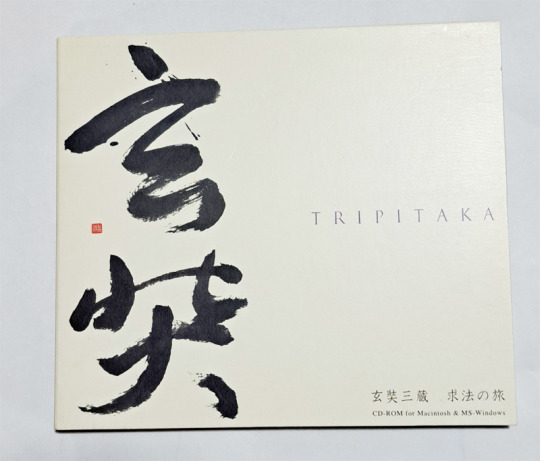
This post is a compilation of a series of tweets I have composed over a period of weeks during this summer.
For years, it was uncertain whether TRIPITAKA 玄奘三蔵求法の旅, by Soft Edge, had in fact ever been published. I remind the more absent-minded readers that this is the studio responsible for the mythical CD-ROM Cosmology of Kyoto, originally released in Japan in 1993, later published in the United States by Yano Electric in 1995. Knowledge of this their second and final production comes solely from the online CVs of producers Hiroshi Ōnishi and Mori Kōichi. No other information could be found online, and no actual copy of the game was known to exist.
Earlier this year, this disc surfaced at Yahoo Auctions. It sold for nearly $300 after 24 bids.

As suggested by its tile, which translates to Xuanzang Sanzo's Dharma-Seeking Journey, it was always assumed that the game illustrated episodes of the life of the celebrated Chinese Buddhist monk, particularly his 7th century pilgrimage to India. The captures printed on the back not only show a character highly reminiscent of the ancient scholar, they depict a variety of scenes taking place in China and India.
According to the severely incomplete archived version of PD Inc's website, the Japanese publisher responsible for this digipack, it was available for sale at museums hosting the 1999 Silk Road Journey To The West exhibition, which suitably matches the date printed on the back cover. However, this date presents yet another open question, as the Ōnishi-San and Kōichi-San bios both list it as a 1995 production.

The technical specifications may provide an enlightening clue, as they refer to Windows 95, 640x480px resolution and an 8-Bit color mode. This indicates that TRIPITAKA was indeed developed sometime between 1993 and 1995, although it was never published in the CD-ROM game circuit, certainly not in the immediate years after its development was completed. Combined with the data retrieved from the publisher's website, the edition shown here appears to have been produced solely for the occasion, as a means to diversify the museum shop catalog for this major exhibit, given the shared theme.
It would have been nearly impossible, had the program been in fact published in 1995, for a single copy to not have been spotted or mentioned online by the many Japanese collectors who have attempted to locate it for decades, unsuccessfully. On the other hand, a CD-ROM that was sold at a museum exhibit is likely to be purchased by visitors who were entirely unaware of the item's relevance as an elusive multimedia gem.
If a tangent is permitted here, both productions are inextricably linked with the museum space, and as far as I can speculate, Cosmology of Kyoto was, itself, also published with the intention of being made available in gallery stores in addition to computer game retailers. I say this because this was a production made possible by collaborative efforts including a variety of Japanese museums, to the extent these are referenced by name in the game's credits.
Considering the price at which the item was sold at auction, I was fairly certain that it was purchased by one such video game collector who knew exactly what they were bidding for. Later in July, I was able to locate the buyer and establish contact. Initially, the buyer was only able to produce this screenshot of the disc program launcher. The title reads "Cosmology of Asia", validating the claims that Soft Edge was in effect planning for series of edutainment software prior to its demise in the mid-90s.

In my second contact with the owner, I asked if he was available to produce a disc image and share it online for purposes of software preservation. The owner politely declined, stating that this was not something he was willing to do but offered to record the following gameplay video instead.
youtube
At a glance, the art style of Tripitaka is unsurprisingly similar to that of Cosmology. Most of its episodes occur during the day, whereas the latter was mostly played under the dark cover of night. The first scene depicts a dying Xuanzang reminiscing on his journeys in the company of a young chronicler. Structurally, both games are also nearly indistinguishable from one another, producing ample historical information for context, including detailed maps and chronologies.
TRIPITAKA was considered to be lost media for decades. As such, the importance of this footage could hardly be overstated. I would not hesitate to compare this development to the unearthing of Osamu Sato's Chu-Teng, the Eastern Mind sequel that was also deemed lost for many years, miraculously found during the time this blog was inactive.
I am delighted to have played a minor role in the unraveling of this thirty year old mystery, and can hardly contain my enthusiasm, as I now find myself equipped with sufficient information to produce a full post concerning a game about which I could not have written more than a sentence, just last year.
I would also like to thank the author of the @mendelpalace Tumblr for his timely alert regarding the Yahoo listing.
188 notes
·
View notes
Text

I have long wanted to translate this 1997 interview with Keita Amemiya concerning the production of Nanatsu Kaze no Shima Monogatari. I did my best to maintain the format in which it is presented in Enix's Picture Imagination Book. You can browse the translated pages here.
I also seized the opportunity to extract and compile Gaupu's dream sequences, consisting of unique stop-motion animation sequences which have, much like the game itself, remained in relative obscurity and beg to be enjoyed by a much wider audience.
youtube
Also, while I'm on the topic, here are some rare images of Gaupu's one-of-a-kind clay sculpture, part of Amemiya's private collection. It was photographed exclusively for the no. 11 issue of the Saturn Fan Magazine. I wonder if he still has it?



#nanatsu kaze no shima monogatari#keita amemiya#interview#translation#givro#stop-motion animation#sega saturn#enix#Youtube
33 notes
·
View notes
Note
Do you know of any good “anthology games”? I don’t just mean any games that are collections of smaller games like UFO 50, but rather a game where, like an omnibus film or short story cycle, the collection of original games creates a thematic contrast or tells a story through the juxtaposition of the component games?
Very interesting question. I don't believe that there are many anthologies of games within a game whose order and purpose is deliberate or meaningful, as opposed to, say, commercial. As is commonly known, the standard for game design dictates that its gameplay is anchored to one cohesive genre from start, with a few notable exceptions over the years.
As far as I can remember, the only games that could fit your description would be Panic! (Sega, 1993) which does cite some classic arcade gameplay elements in the context of its chaotic scene progression; certainly Ganbare Neo Poke-Kun (SNK, 2000) whose mini-game collection hints at the evolving complexity of gameplay designs from their earliest manifestations; to an extent, The Witness by Jonathan Blow is in itself an anthology of puzzles of increasing complexity, some of which based on existing puzzle game schemes both digital and otherwise; I've also heard that Dum-Dum (Hogo Company, 2001) uses videogame replicas in a significant way, as the entire game is set within a fictional computer OS from 1985. Classic examples of mini-games within a game such as those of the WarioWare fit part of this description although the sequence of minigames is mostly aleatory. I don't know if this reply was in anyway useful. I'll continue to give this question some thought and will tag you should I remember anything more specific. Again, thanks for inviting my thoughts to move into this most curious direction. I have longed thought about a possible game set in an early 90s SEGA arcade where the sequence of playable games would tell a love story between a boy a and a girl whose pockets were lined with quarters.
10 notes
·
View notes
Text
Japan's Crafty Videogame Cover Design Part V: 2001 - 2015

Japanese game cover design is widely admired by players around the world, a true craft which that was perfected over the years. In an effort to make their productions stand out, many studios explored a more tactile range of materials from modelling clay to plastic, wood, paper and metal. The resulting effect elicits a sense of fascination and instant nostalgia, particularly at a time when physical game editions are on their way to becoming altogether irrelevant. What follows is a fascinating and largely unexplored chapter of the medium's rich, expressive history.
This post is a continuation of Part IV.




MegaHouse, a Bandai subsidiary, joined forces with Namco to produce their 2004 line of majestic figures named Namcole. These unique mini-dioramas were meant as a celebration of the iconic box designs of the games' Famicom editions.


The original Pikmin cover used 3DCG graphics. In 2004, someone at Nintendo thought of the obvious and enlisted Wataru Yamaguchi - the designer of the aforementioned Wild Trax cover - to use his rare talents as a sculptor and represent the tiny creatures in clay - as they should have been from the start.


If any doubts remained among players as to Nintendo's decision to give its new handheld a second screen, Famicom Wars DS dispelled them completely. This was the interface the series had needed all along. The use of toy soldiers for the cover picture is but a delightful bonus.

The memory of Kororinpa may have faded amidst the vastitude of Wii's library. Its dainty and uplifting clay, carboard and felt sheet cover art may persuade viewers to revisit the simple pleasures of holding a Wiimore in one's hands as if it were a portable labyrinth game box.

Elebits offers a curious take on the first-person shooter genre by equipping the player with a harmless albeit dangerously messy gravity gun capable of moving objects in the hunt for the drop-shaped creatures the game's cover so congenially reproduces in plasticine.


Over the years, HAL was never quite able to overcome its healthy infatuation with modelling clay. As if further evidence of this was required, Tatchi! Kābyi sūpāreinbō transitions Kirby from its previous painterly form into the domains of luscious, polychromatic playdough.




It would be a mistake not to make a reference to the MSX Fan magazine, published from 1987 to 1995 by Tokuma Shoten. Each featured a bespoke modelling clay rendition celebrating the main game featured in the issue; all created by a team of highly talented in-house artists.
#videogame cover art#japanese videogames#diorama#modelling clay#papercr#maquette#model#sculpture#advertising#classic games#msx fan magazine
10 notes
·
View notes
Text
Japan's Crafty Videogame Cover Design Part IV: 1996 - 2001

Japanese game cover design is widely admired by players around the world, a true craft which that was perfected over the years. In an effort to make their productions stand out, many studios explored a more tactile range of materials from modelling clay to plastic, wood, paper and metal. The resulting effect elicits a sense of fascination and instant nostalgia, particularly at a time when physical game editions are on their way to becoming altogether irrelevant. What follows is a fascinating and largely unexplored chapter of the medium's rich, expressive history.
This post is a continuation of Part III.

Some of the most exclusive Japanese items are gifted inside paulownia wood boxes inscribed with the manufacturer's pyrographic seal. The distinguished choice for Hoshi no Kirby Super Deluxe's cover aptly conveys the extravagance of a game that was three full years in the making.


The last Nirasawa entry of the thread comes in the form of another underrated futuristic RPG, Cyber Doll. I include the advertisement so as to better showcase the original diorama photo in all its atmospheric glory, before being recoloured for the far less striking game cover.

Ore! Tomba's cover wholly encapsulates the game's main motifs with its spirited, untamed and impish scene. The manner in which the US version replaced it for a hand-drawn facsimile helps to understand how much character these whimsical statuettes brought to the original.

Far from the most memorable boxing game of its era, Hard Blow by Electronic Arts Victor nevertheless wins this judge's 10 points for employing simple humour in its efforts to softly illustrate this ruthless, bloody sport.

Go For It! Morikawa-kun MK 2 was MuuMuu's first project after the acclaimed Jumping Flash! games. Released in 97 at the height of the Tamagotchi craze, its cover scene shows PiT and its square-shaped world with a degree of detail and texture the game engine regrettably could not.

A singular game < - > A singular cover. It shows a real, sculpted piece of metal or glazed ceramic over a dimly-lit bed of sand. One of the defining traits of Love-de-Lic's approach to character design and world creation was the sculpting of those elements before making them digital.



Sorcerian is the 5th entry in the Dragon Slayer saga, published in 1987 for the PC-8801. A Windows remake dubbed "Forever" celebrated its tenth birthday. Falcom brought in master figure designer Kenji Ando, of Super Imaginative Chogokin fame, to create this fascinating diorama.




The unsung steampunk RPG Wachenröder is a fine example of how videogame visual concepts can be elevated when a sufficient portion of the budget is allocated to gifted artists. These and many other sculptures of its characters and vehicles can be found in the pages of its manual.


Knight & Baby accurately exemplifies how overseas editions of Japanese games can mute, distort or altogether supress that which the original editions had to offer. How these lovingly sculpted scenes could be replaced by a marginally competent 3D render defies all common sense.


As with the aforementioned Pet in TV, MuuMuu once again decided to use clay as the raw material to promote their farming simulator, Astronōka. The complexity of this picturesque diorama, professionally created by Studio Nova, is shown in greater detail on the soundtrack cover.

Though it fails to reach the artistic heights of its aforenamed prequels, Goemon: Mononoke Sugoroku affectionately celebrates the likeness of its cast with this series of blitheful figurines by Ken Matsuura; while signalling the game's unique take on the claymation aesthetic.

Zipangujima: Unmei wa Saikoro ga Kimeru! is a 1999 board game simulation, as you may have guessed from its prominent use of dice. Set in medieval Japan, the model displayed in the cover combines highly recognisable elements from the era with a touch of slapstick comedy.


Ganbare Neo Poke-Kun is one of the most experimental and underappreciated games from the turn of the century. A humble ode to the solitary programmer, it's also a poignant commemoration of game history. It's only fitting that its cover art also honours the clay diorama tradition.

The second instalment from this manga-inspired series spanning across multiple hardware generations, PoPoLoCrois Monogatari II's cover image catches the eye with a skilled bas-relief design over stoneware clay, lending it the credible aspect of something arcane and ancient.

Although an expertly designed 2D detective adventure, Fushigi Deka is one of the few titles in this list which features its modelling clay cover scene as the in-game title screen. What offbeat comedy can be seen here is mirrored tenfold in the game proper.

Kuru Kuru Marumaru is a rather eccentric driving simulator created by Jam in 2001. Much like the last entry, the elaborate modelling clay diorama shown in the cover conceals a cartoon-like universe blending FMV animation, quality 2D sprites and 3D car driving test segments.


Endonesia's subtly hints at the very substance that its exotic, oneiric archipelago is made of. Released in 2001, it was the first project developed by Vanpool, a studio composed of former Love-de-Lic members who carried with them an undying love for modelling clay as a medium.
This post is continued in part V.
#videogame cover art#japanese videogames#diorama#modelling clay#papercr#maquette#model#sculpture#advertising#classic games
9 notes
·
View notes
Text
Japan's Crafty Videogame Cover Design Part III: 1992 - 1996

Japanese game cover design is widely admired by players around the world, a true craft which that was perfected over the years. In an effort to make their productions stand out, many studios explored a more tactile range of materials from modelling clay to plastic, wood, paper and metal. The resulting effect elicits a sense of fascination and instant nostalgia, particularly at a time when physical game editions are on their way to becoming altogether irrelevant. What follows is a fascinating and largely unexplored chapter of the medium's rich, expressive history.
This post is a continuation of Part II.




Released in 1993 for the PC-98, ArtDink's Lunatic Dawn is an RPG series forged in the great western tabletop tradition. The first four episodes are presented with highly naturalist dioramas wherein the delicate lighting plays as important a role as the sculpting itself.


Starfox needs no introduction. A less known fact is that Nintendo commissioned a series of rather costly puppets that were used in its TV ad, controlled by VFX expert and puppeteer Takashi Yamazaki. The decision to include them so prominently in the cover was an enlightened one.

Seiken Densetsu 2's cover art is often cited as evidence to the claim of Japanese game packaging superiority. It combines the sensational illustrations of Hiroo Isono with bespoke clay models of the cast, lending it an incredibly distinct look that is unique to the JP edition.

The second entry attributed to Yasushi Nirasawa is A-Rank Thunder Tanjouhen, a Telnet Japan Adventure RPG released in 1993. Though similar in tone and aesthetic, this menacing cover design guards a videogame far superior to the above - some would even say underappreciated.


In 1994, Game Freak set out to develop a platformer built for speed. Though light is faster than sound, Pulseman did not qualify for the race against the blue hedgehog. A decade later, it developed cult following, owed to the game's many intrinsic qualities and winsome character.

Lode Runner Twin: Justy to Liberty no Daibouken is a 1994 T&E Soft adaptation of the Doug Smith classic replacing its trademark spartan visuals for a full on juvenile look. If you're wondering whether those are biscuits that Justy & Liberty are standing on, you guessed correctly.


The original Albert Odyssey advertisements showed a very competently made diorama of its characters preparing to take on a dragon foe. For Albert Odyssey 2: Jashin no Taidou's cover design, clay was the material of choice. Alas, much of its charm was lost due to inept editing.

Few will remember the My Home Dream series of story-driven, house design simulators. The choice of so colourful and child-like a composition for the PC-9800 edition doesn't quite match the tone of the game itself; though it is vastly preferable to that of its lacklustre PS1 port.


An inescapable reference, Monster World IV's cover boasts a masterfully sculpted likeness of Asha and her companion Pepelogoo. By 1994, 3D computer graphic rendering would have been as viable an option to achieve a similar effect. In the end, Westone made the right decision. Below is the original, uncropped image of the diorama modelled by Hideo Nakajima and photographed by N. Suzuki.

everal games in the mid-1990s capitalised on expanded colour gamuts to replicate the unique look of claymation, a pursuit that endures to this day. Wild Trax by Nintendo EAD and Argonaut Software was among the first to attempt this in a 16-Bit system, and do so successfully.



Between 1994 and 1996, Gakken, the company behind the mythical Compact Vision TV Boy, published a series of educational software named Gakken no o-Benkyou Soft for the Sega Pico. Their cover designs contained a host of memorable clay, plush and fabric dolls and accessories.


In 1987, Hummingbird Soft introduced the Lovecraftian horror series Ghost Hunter that included numerous videogames, tabletop RPGs and novels. Kurokishi no Kamen, a 1994 3D0 exclusive, was the last chapter of the digital trilogy, following Laplace No Ma and Paracelsus no Maken.


Kururin Pa! (95) and Shingata Kururin Pa! (96) are two block-based puzzle games by Sky Think Systems. Their covers show a more minimalist approach combining clay, felt and possibly other materials. A similar aesthetic is found in Harmful Park, though more baked than sculpted.

The use of clay models on the covers of board game simulators was recurrent during the 1990s. The Oni Taiji - Mezase! 2-daime Momotarou by O-Two is a pristine example of this: stimulating enough to catch the eye, yet not so glossy as to detract the more discerning player.


Set in the Sengoku period, Rakuichi no Matsuri is a simulation game published by ASCII in 1995 for the PC-98. Cleanly sculpted and savvily lit, its fascinating cover scene shows a daimyō accompanied by his seishitsu, a general and chief strategist sitting around a tactical map.


ClockWerx shamelessly capitalized on Alexey Pajitnov's name and image by listing him as an endorser. The Japanese ports by Axes Art Amuse contributed a series of quality claymation sequences between levels, their exuberant and inviting characters adorning the PS1 & Saturn covers.
This post continues in part IV.
#videogame cover art#japanese videogames#diorama#modelling clay#papercr#maquette#model#sculpture#advertising#classic games
13 notes
·
View notes
Text
Japan's Crafty Videogame Cover Design Part II: 1989 - 1992
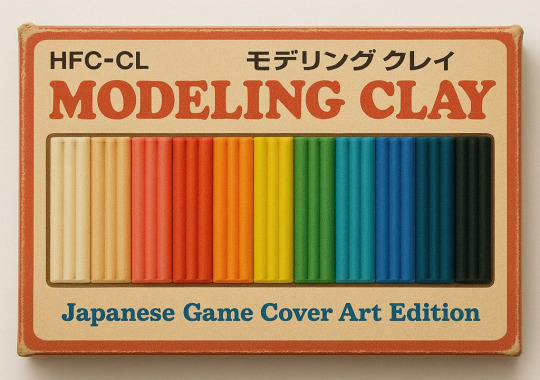
Japanese game cover design is widely admired by players around the world, a true craft which that was perfected over the years. In an effort to make their productions stand out, many studios explored a more tactile range of materials from modelling clay to plastic, wood, paper and metal. The resulting effect elicits a sense of fascination and instant nostalgia, particularly at a time when physical game editions are on their way to becoming altogether irrelevant. What follows is a fascinating and largely unexplored chapter of the medium's rich, expressive history. This post is a continuation of Part I.

When first announced in 85, PRAJATOR was highly anticipated. After the director at Fireball System vanished, the studio was forced to pivot and deliver a heavily truncated game in 89. The cover shows a custom-made figure of the protagonist, the Image Ranger, by Masao Ishikawa.


I'll allow myself some latitude for obvious reasons and make an honourable mention to Mother (89) and Mother 2 (94) whose back covers include a few from the dozens of iconic clay sculptures of its characters and key items, shown in greater detail in their respective manuals.



From 1989 to 1995, FM Towns issued a number of freeware discs - including a pair for the Marty - whose covers consisted entirely of clay sculptures. Though not videogames per se, these exist in a space that is adjacent enough to the subject of this thread to deserve a mention.

Ganbare Goemon Gaiden: Kieta Ōgon Kiseru (1990) is presented with this lavishly layered, admirably executed paper composition borrowing a series of motifs and the overall style of Japanese art from the Azuchi Momoyama period, during which the fabled bandit Ishikawa Goemon lived.

Don Doko Don had the fresh look of a late 80's Taito arcade but the familiar feel of their earlier successes. The vibrant diorama included in the 1990 home console ports shows the friendly lumberjack tipping his cap to the player. An extended view of this scene is revealed in the Famicom cart sticker.

The Ninja Kids is a lesser known arcade brawler from Taito from 1990. Set at the end of the millennium, it nonchalantly toys with satanic symbology. The flyer sculpture is a treat. Notice how the yellow ninja Sasuke wields a kusarigama with a bath plug chain dangling from it.

Totsugeki Bareishonzu is a GameBoy puzzle game developed by Atlus in 1991. Its US title, Spud's Adventure, shrouds the fact that the player can control three different vegetable characters, including the carrot and eggplant seen here venturing together into the unknown.

By the time VING published Bubble Bobble for the FM Towns it had already achieved the status of a classic. This 1990 edition is rather unique in that it casts aside the cheerful artwork that long illustrated the series, instead adopting a clay model bathed in real-life bubbles.


SD Snatcher is a 1990 RPG restyling of the original cyberpunk adventure hit. Both the game cover and publicity adopted the concept of super deformed to the letter, presenting the cast as plastic figurines. That same year, MGS 2 Solid Snake ads also relied heavily on models.


Developed by Arsys Software in 1990, Spindizzy Worlds is a Japanese-made sequel to the original by Paul Shirley. Integrating various types of materials from plastic to clay and wood, this cover image produces a very polished representation of the game's geometric landscapes. I include the PAL version for another perspective of the same composition.


The back cover of Daiku no Gen-san, also known as Hammerin' Harry, contains an unexpected and unassuming diorama of the intrepid carpenter gazing at the rising sun while pledging to quash the evil construction company that threatens his home town - truly, a people's hero.

L-Dis is an often neglected reference within the category of humorous, cartoon-style shooters from the 1990s. The giant snake presented in this appealing cover art is in fact one of the game's last boss battles.

Hyaku no Sekai no Monogatari is a board game RPG simulation developed by Ask in 1991 for the Famicom. One look at this stunning cover immediately evokes the experience of playing on a table top with the aid of miniatures, a tradition that goes all the way back to the origins of the genre.

In 1991, Hiro planned to release Castelian for the Famicom and Game Boy. This was to be a Japanese port of the game Nebulus which was cancelled despite advertising having been published already, likely due to a last minute deal with Morinaga Chocolate resulting in KyoroChan Land.

Released in 91, Beast Warriors belongs to the inglorious category of mediocre games with impressive cover designs. This softly-lit and unapologetically grotesque scene is the work of the late great Yasushi Nirasawa - the mention, alone, should explain why it looks so remarkable.

Namco's Golly! Ghost! arcade employs a mechanically animated diorama as an integral component of its light gun-based shooter experience. The Victorian mansion interior is overlayed with a transparent screen that magically channels it ghostly apparitions. You can see it in action here: https://shorturl.at/o4mS6

In a curious inversion of the habitual trend, it was the cover for the 1991 NES edition of Princess Tomato in the Salad Kingdom that featured these delightful, multihued clay figures Hudson Soft created in 1988 to advertise the Famicom edition in Japan. You can watch this unique commercial here: https://shorturl.at/rGSfS


Few modelling clay covers can claim to be as fetching as those from Chuuka Taisen (Famicom, 89) and Gokuraku! Chuuka Taisen (PC Engine, 92). Although they use the same raw material, each of these editions sport unique interpretations of the game's characters and world.

Ganbare Goemon Gaiden 2: Tenka no Zaihō is a direct sequel to the aforementioned 1990 RPG, its brighter cover design is equally deserving of praise and recognition. One has to wonder whatever became of these exquisite designs and if they were preserved for posterity.

Though Gimmick! was released later in the life of the Famicom, the developer's use of cunning techniques and expansion audio made it a desirable despite the dated hardware. Interestingly the game failed to attract interest from US publishers and was localised only in Scandinavia of all places.


Despite its status as a Master System classic in EU and the US, Monster World II: Dragon no Wana skipped the Mark III in Japan and was playable only on the PCE before its 1992 Game Gear release. The cover's memorable diorama represents Wonder Boy in his many transmogrifications. This post continues in Part III.
#videogame cover art#japanese videogames#diorama#modelling clay#papercr#maquette#model#sculpture#advertising#classic games
14 notes
·
View notes
Text
Japan's Crafty Videogame Cover Design Part I: 1983 - 1989

Japanese game cover design is widely admired by players around the world, a true craft which that was perfected over the years. In an effort to make their productions stand out, many studios explored a more tactile range of materials from modelling clay to plastic, wood, paper and metal. The resulting effect elicits a sense of fascination and instant nostalgia, particularly at a time when physical game editions are on their way to becoming altogether irrelevant. What follows is a fascinating and largely unexplored chapter of the medium's rich, expressive history.


Door Door was Enix's debut and an instant hit, created by Koichi Nakamura for a national contest whose 1st prize he won. The cover's exquisite paper cut out composition mirrors the game's goal, with Chun luring his enemies into a door to trap them. (Modern redesign by @gingerbeardman)

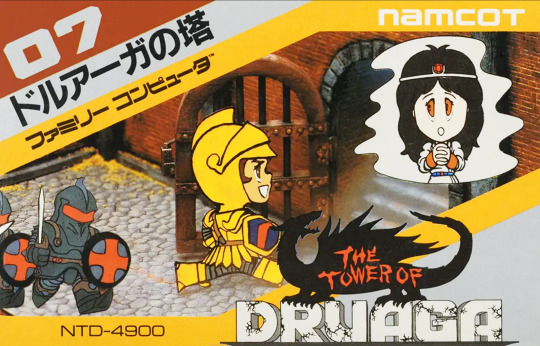
Tower of Druaga is one of the most curious game concepts of its era, inspired by both ancient mythology and Japanese modernity. The arcade game flyer, and consequentially the Famicom cover, used charming dioramas and paper cut-outs due to president Nakamura's distaste for manga.


Senjō no Ōkami was designed in 1985 by the great Professor F, Tokuro Fujiwara - incredibly, at the same time as he developed Makaimura. The choice of a diorama for the Family Computer port cleverly softened the game's bellicose theme by equating it to a toy soldier play set.
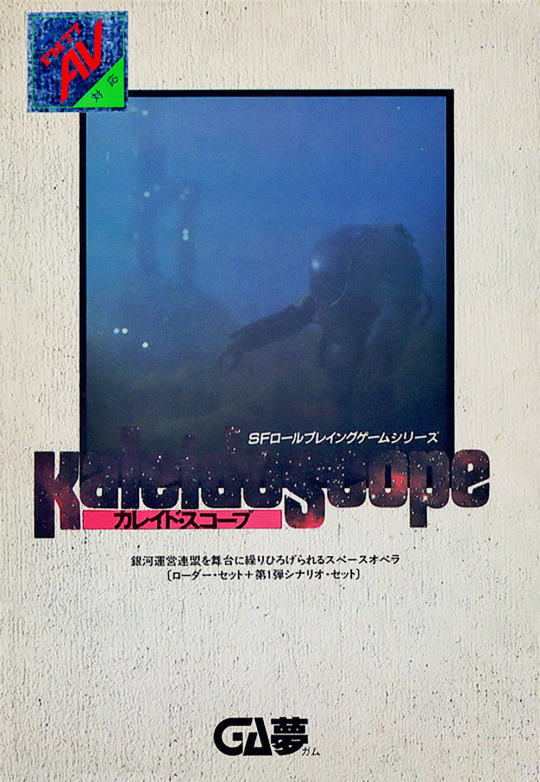

One of the most obscure titles in this thread, Kaleidoscope 7 Man-kōnen no hōshi-tachi is the first episode from a space RPG series produced by Hot B in 1985 for Japanese PCs. Though the game failed to live up to the expectations, its alien dioramas still capture the imagination.



The 1985 editions of Xanadu Dragon Slayer II for the PC-8801 and X1 featured differently angled pictures of a magnificently fashioned and photographed diorama by Kow Yokoyama & Masaki Okumura. The degree of minutiae and dramatic lighting place it in a category all its own.


Aside from countless hours of exasperation, Meikyū Kumikyoku: Milon no Daibōken's vibrant and gregarious cover illustration also conceals an unexpected diorama of its Castle Garland. The same picture is seen in greater detail on the NES edition released two years later, in 1988.

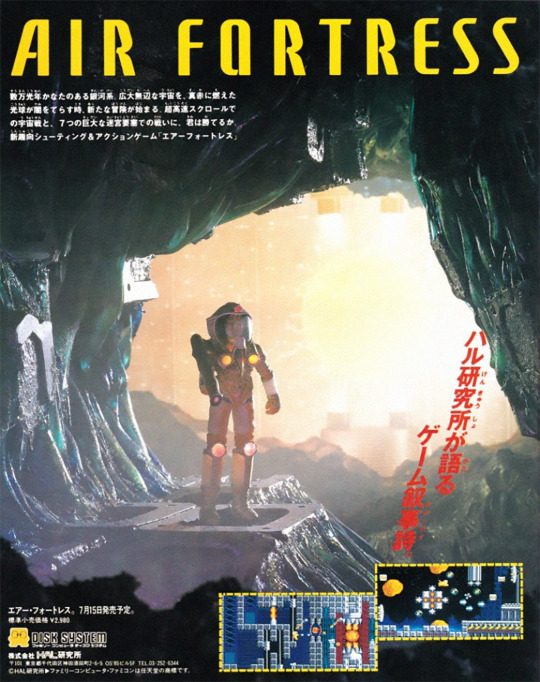

Air Fortress is a 1987 shoot 'em up and platform action game hybrid by HAL Laboratories. The lavishly ornate suit of the Hal Bailman figurine photographed for the cover art and advertisements speaks of an ambitious design by Hiroaki Suga which defied the limits of the its time.
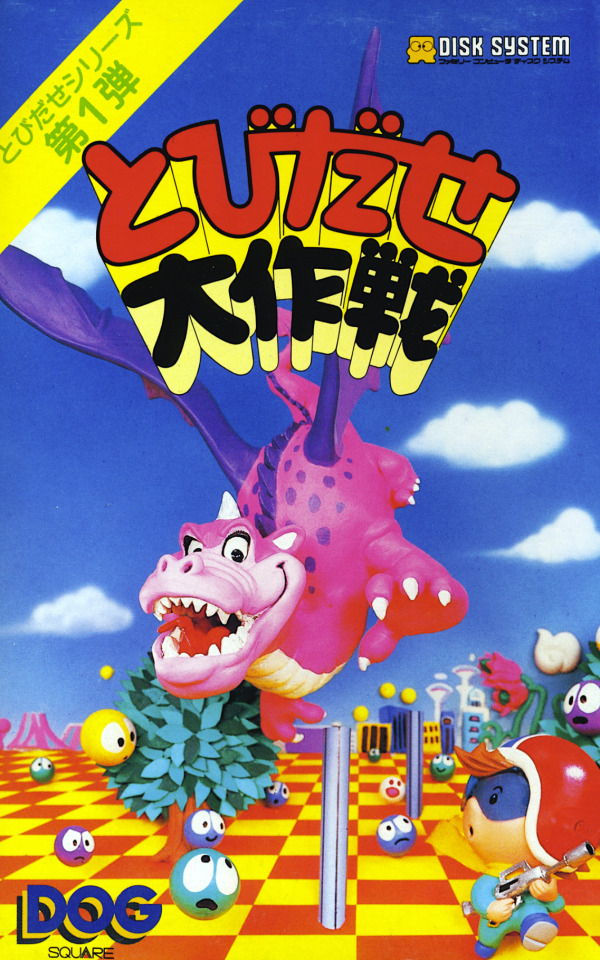
Tobidase Daisakusen was a valiant effort by Nasir Gebelli and Hironobu Sakaguchi to replicate the fast-paced 3D wonders of SEGA's Space Harrier. The vivid, arresting clay sculpture lends an exceptional sense of depth while entertaining the eye with a rich, multidimensional story.
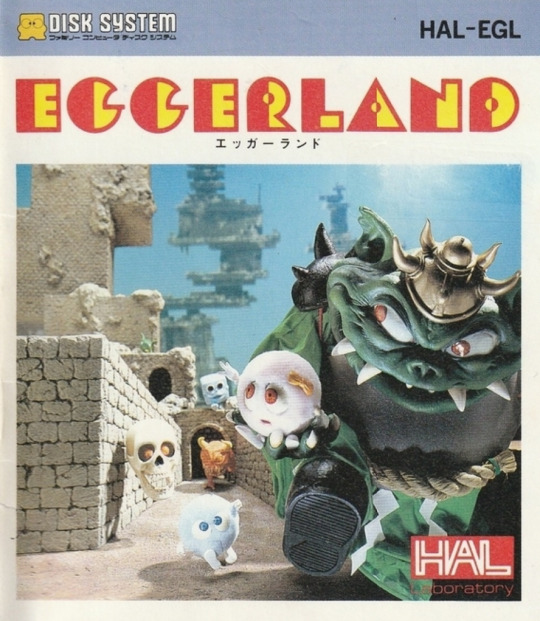

A decade-long series on Nintendo's 8-Bit systems, Eggerland is one of HAL's most influential creations. The cover art beautifully sets the tone and premise for this puzzle game using high expressive models and character placement. Notice the matte painting on the background.

Another FDS title from 1987, Kick Challenger Air Foot Yasai no Kuni no Ashi Senshi is one of the most unusual propositions of its time. The detail and emphasis of the character's tennis shoes fits the fact that the game is played by controlling the tomato's feet, one at a time.

It's not known why HAL adopted the use of sculpted characters/dioramas for many of their games in the years 1987-88. Like Air Fortress, Fire Bam offers an imposing close-up of the protagonist; one which, judging from its style and rigour, was carved by the same nameless author.

Though not exactly a video game cover, the arcade flyer for Namco's Assault is composed of a series of spectacular dioramas featuring a tank whose design is credited to master mecha creator Kunio Okawara.

In 1988, Taito released Rainbow Islands: The Story of Bubble Bobble 2 on most consoles and PCs. However, this highly dynamic and colourful clay model scene is unique to the Famicom edition, perhaps an added effort to make their box more conspicuous among the vast library.

he hilarious cover for the Mega Drive port of KaGeKi includes a dexterously sculpted set of figures filled with teeming with remarkable details, namely their finely carved hair, hands, nails, teeth and realistic skin. Sadly, the author isn't credited.

Released by Winky Soft in 1989 for the Famicom, Tom Sawyer no Bouken is a rather peculiar adaptation of the novel, in that it takes place inside Tom's dream after he falls asleep during class. Accompanied by Becky and Finn, the colourful trio's perky poses are truly priceless.

Battle Ace is a largely unsuccessful attempt at an interplanetary, first person 3D shooter. Regrettably, the richly detailed model featured in the cover of this 1989 Hudson Soft title is just about the only source of excitement the player is likely to encounter.

Teke! Teke! Asmik-kun World, released in 1989, was the debut of Asmik-kun as a playable character, it having been the company's mascot for several years. The pink dinosaur is depicted here with its finger raised and tongue sticking out, as if taunting his defeated enemies.


Hani in the Sky (1989) and its sequel Hani on the Road (1990) are two cult games by the small studio FACE. This is an instance where the use of clay is well within the theme, as the character Hani is directly inspired by the "dancing" terracotta statues from the Haniwa period. This post continues in Part II.
#videogame cover art#japanese videogames#diorama#modelling clay#papercr#maquette#model#sculpture#advertising#classic games
12 notes
·
View notes
Text

I just posted a very long thread on the subject of Japanese videogame cover design and its use of a variety of sculpture materials to stand out and achieve a lasting impression on the player. Should you feel that X is not worthy of your visit, no reason to worry, I mirrored it on my BlueSky as well. I hope you will be pleasantly surprised.
33 notes
·
View notes
Text




Magazine advertisements for N.U.D.E@ Natural Ultimate Digital Experiment by Red Entertainment, 2003. It's a shame that these playful scenes never made it to the game package design itself. They would have made a fabulous transition from DVD box cover to manual cover.
#n.u.d.e.@#natural ultimate digital experiment#red entertaiment#xbox#advertising#microphone-operated games
23 notes
·
View notes
Photo


















Bāgā: Burger Burger - Rythmics - 1997 Bōru: Smash Court - NAMCO - 1996 Koniro: Gunbird 2 - Psikyo - 2000 Bibiru: GeGeGe no Kitarō: Gentō Kaikitan - Tose Co., Ltd. - 1996 Bakudan: Shingata Kururin Pa! - Sky Think System - 1996 Ase: Tondemo Crisis! - Polygon Magic, Inc. - 1999 Kyoichi: Minna No Golf - Camelot Software Planning - 1997 Warau Ushi: Bokujou Monogatari Harvest Moon - Victor Entertainment - 1999 Kiwotsukete!: Bomberman Land - Hudson Soft - 2000


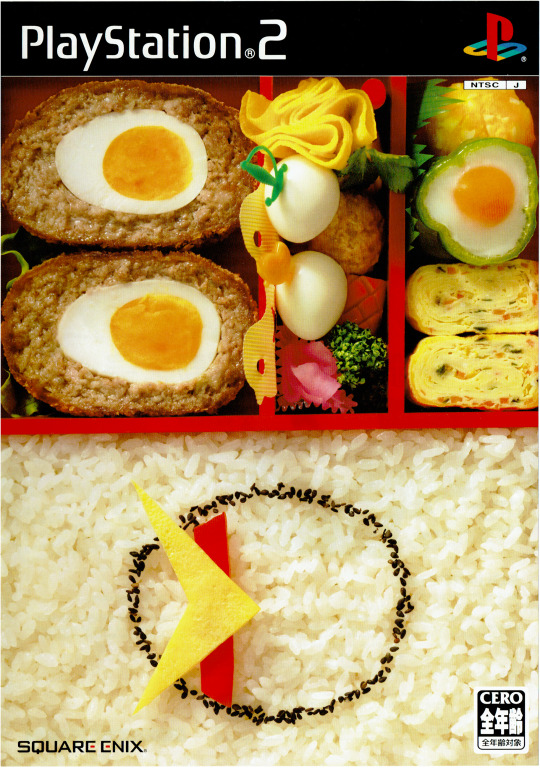



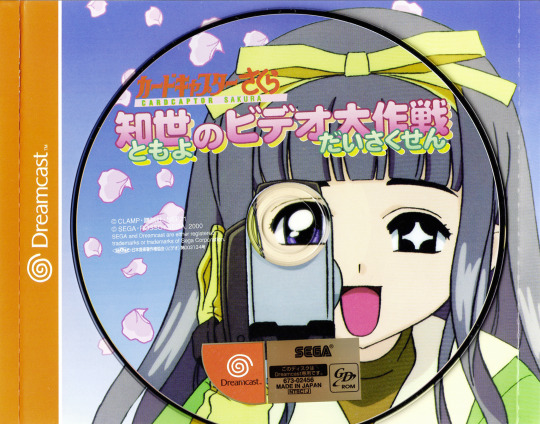
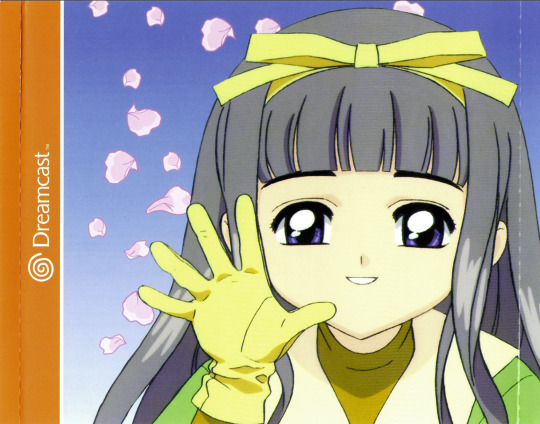
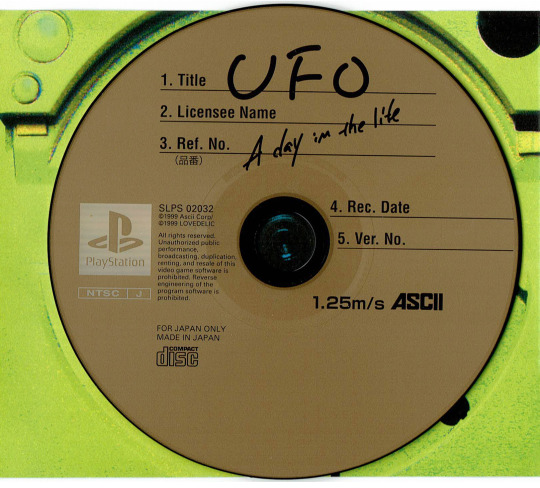
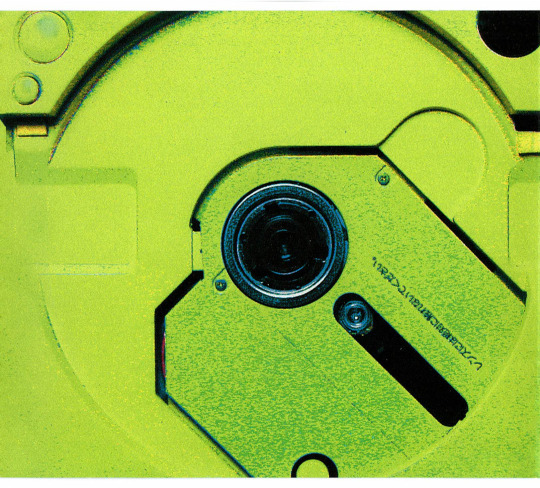
Visual narratives in Japanese game packaging: before and after.
Ramen: Ore no Ryouri - Argent, 1999 Bento: Hanjuku Eiyuu 4: 7-Nin no Hanjuku Eiyuu - Square Enix, 2005 Kincho: Ka 2 Rettsugō Hawai - Zoom, 2003 Shashin: Cardcaptor Sakura: Tomoyo no Video Daisakusen - SEGA, 2000 Eirian: UFO: A Day in the Life - Love-de-Lic, 1999
#visual narratives in japanese game package design#burger burger#smash court#gunbird 2#gegege no kitaro#shingata kururin pa#tondemo crisis#minna no golf#bokujou monogatari harvest moon#bomberman land
1K notes
·
View notes
Text

The game that most influenced my design was GADGET, not Myst. I played GADGET from start to finish. I once met Haruhiko Shono. I felt his deep thoughts in GADGET, but I did not experience a similar feeling with Myst. - Takashi Kobayashi, creator of The Book of Watermarks
15 notes
·
View notes
Text

~ Mirrors & Reflections in Videogames ~
Current version - 228 entries
Full list here: shorturl.at/kovSY
Full-sized picture: shorturl.at/H1R52
Suggestions are still welcome via the list file.
Thank you!
13 notes
·
View notes
Text

Advertisement for Tenshi Doumei, a 1998 game developed by the software division at TGL, the same group that brought us the Farland Story series. Hidden beneath the fairly poetic cover art, I regret to say, is an utterly prosaic MechWarrior tactics affair. Artwork likely by Yukina Terahara who is credited as character designer and because the style is reminiscent of her work in Tilk: Aoi Umi kara Kita Shōjo.
#tenshi doumei#Technical Group Laboratory#farland story#tactics rpg#mechwarrior#cover art#1998#playstation
16 notes
·
View notes
Text
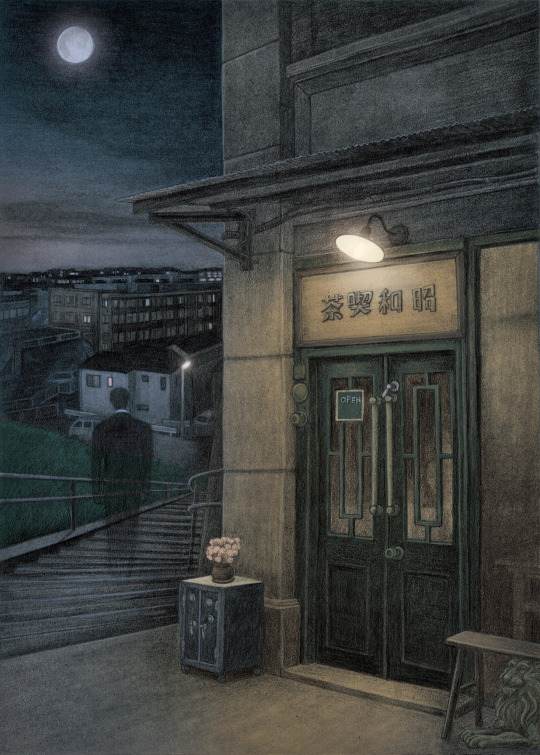
Wallowing in admiration for Shinsaku Fujita's cover art for Riku Onda's latest book, Coffee Kwaidan, a collection of supernatural stories shared among a group of friends over a variety of brews.
37 notes
·
View notes
Note
I played D on the Sega Saturn and it really spooked me at the time. I remember a particular jump scare with a skeleton hanging in a closest. But I played the game in full recently and its pace is so slow and measured that I couldn't image why it was so shocking to me back then. Now I learn there was a D2. What do you think of it? Does it stick to the same FMV-driven adventure game trappings?
I have the utmost respect for all Kenji Eno games. The original D is, of course quite unique and unrepeatable. D2's development process was lengthy, onerous and having to entirely rethink his original Panasonic M2 game concept was more stressful than Eno probably cared to admit. However, pre-rendered CG still plays a major role as a storytelling device. Also, all indoor exploration scenes play like the original D, despite running in real-time 3D. The game's themes have much greater implications and the ending is among the most thought-provoking from any game of its time. Thanks for your question! P.S. - That skeleton scene also got the best of me back in the day.
7 notes
·
View notes